Skull and Bones is quite the enigma for me. The ideas behind it intrigue me--I like what developer Ubisoft Singapore is trying to sell me with Skull and Bones' rags-to-respect (and maybe some riches) open-world adventure about forging a name for yourself as a pirate kingpin. But I didn't see much of that narrative present in the slice of gameplay showcased at a Skull and Bones preview. It's left me wanting to try Skull and Bones to see if those narrative threads are there, but wary that this game may be selling a fantasy that it ultimately doesn't fulfill.
In Skull and Bones, you start off as the survivor of a shipwreck, having washed up on the shore of an unknown location. You gather enough resources to build yourself a small dhow, armed with just a simple spear to fend off any threats. Confronted with the notion that you've hit rock bottom, you aspire to become a respected pirate captain and set out to fulfill contracts and loot treasure in order to earn enough money to buy new ships, upgrade your gear and weapons, and hire your own crew.
Skull and Bones is set in the Indian Ocean (the very large body of water between Asia, Africa, and Australia) during the Golden Age of Piracy. This separates it a bit from Ubisoft's other big pirate game, 2013's Assassin's Creed IV: Black Flag, which is set roughly during the same time period but largely takes place in the Caribbean, the much smaller body of water near North, Central, and South America.
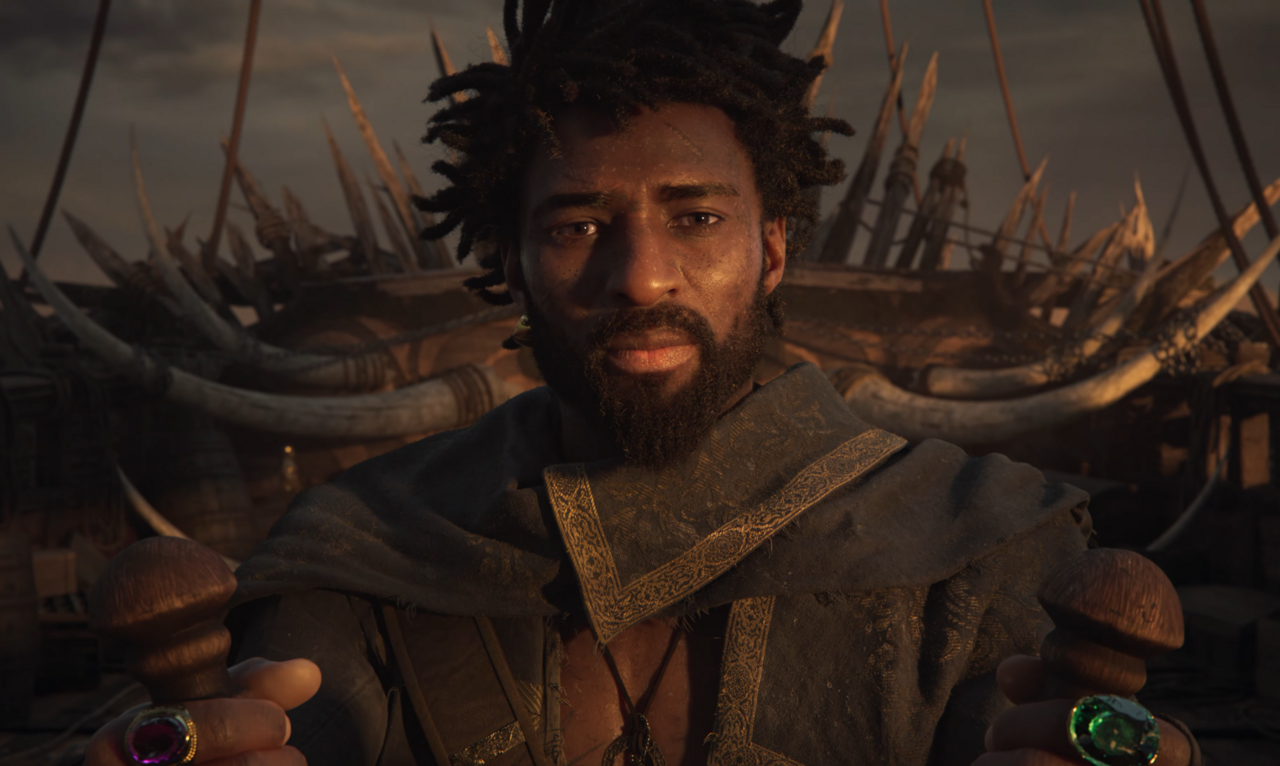
Despite the narrative differences, there are some clear gameplay similarities between Black Flag and Skull and Bones. Naval combat still entails the pattern of spotting a ship on the horizon and attempting to get a better look at it in order to gauge its strength, giving you a chance to decide whether to run or fight--the latter of which sees you relying on an assortment of different weapons to whittle away at your opponent's health. Outright destroying a ship only nets you a fraction of its keep, while simply weakening and boarding a vessel allows you to claim all of its riches.
"Skull and Bones was never meant to be a spin-off of Black Flag," creative director Elisabeth Pellen clarified when I asked about the similarities in the gameplay between the two games. "From the start, the mandate that the studio had received was to create their own IP and their own game. But we thought that it would be a good idea to capitalize on the expertise of our tenant who created specifically the naval combat for [Black Flag]. And then they wanted to bring [the naval combat] to a new environment."
Pellen is Skull and Bones' third creative director, having joined the team in the midst of what a Kotaku report describes as an especially rocky development cycle. She told me that, when she arrived on the project, she pushed for the game to further embrace the gameplay loop of an open-world action-adventure game in order to build on Ubisoft Singapore's history in the genre--the studio has worked in some part on every mainline Assassin's Creed game since Assassin's Creed II.
Prior to this shift, Skull and Bones more closely resembled a five-vs-five team deathmatch-like game (as seen in the Skull and Bones E3 2017 gameplay trailer) where teams faced off in ocean arenas, working together to claim the most loot before successfully escaping the battlefield. "Because of the navigation and the inertia of the five-vs-five, sometimes, it was a bit difficult to maneuver for the players, especially with naval ships," Pellen said. "But in an open world, it felt suddenly way more comfortable. So, we went toward that direction."
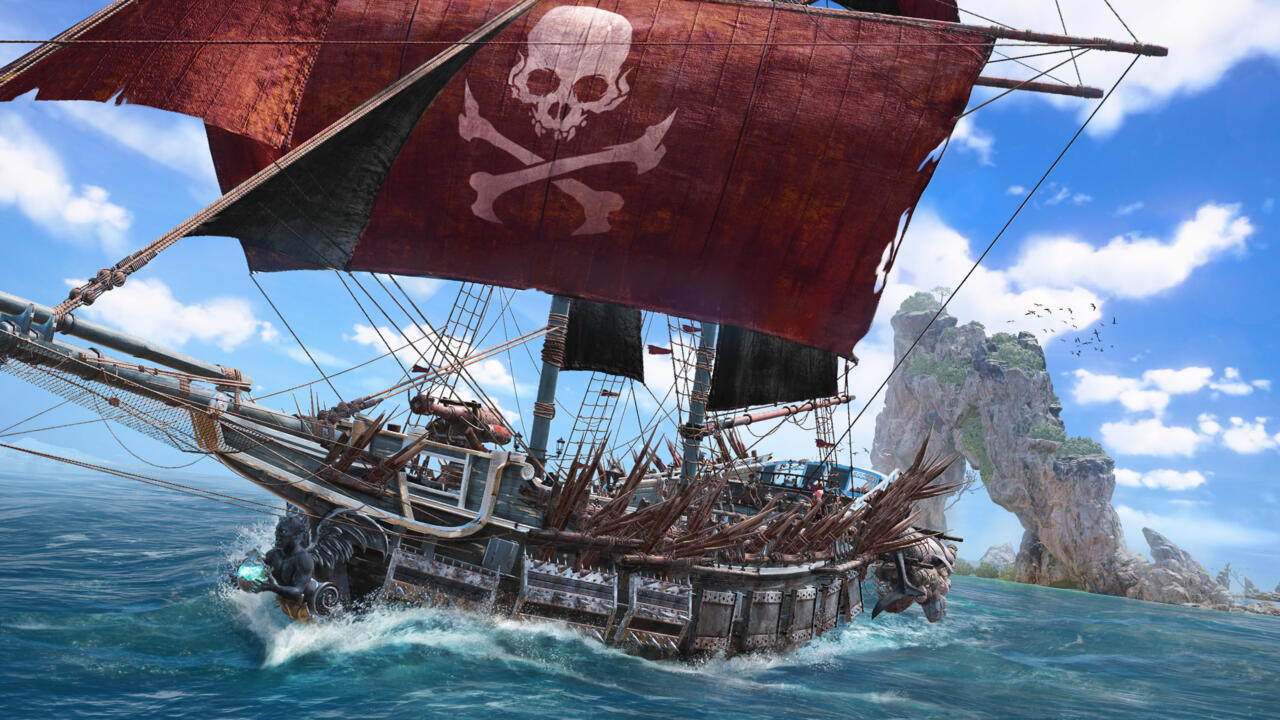
The new direction gave way to what surprised me most of what I saw of Skull and Bones during the preview: on-land gameplay. As the game was no longer strictly about naval combat and more a pirate fantasy, Ubisoft Singapore was able to create space for players to further explore the world of Skull and Bones beyond the deck of their ship--a fairly large departure from what we've seen of the game up to this point. There are now sections of the world where your character can disembark your ship and walk around, having a chance to talk to merchants and other characters. This seems to be where most of the game's narrative occurs, though it won't play out in a traditional single-player campaign.
"Skull and Bones is supported by a deep lore where the player should be able to write their own story," Pellen said. "So we won't follow a solo campaign."
Instead, players will be able to find pieces of lore about Skull and Bones' world and the history of the NPCs that inhabit it. "You will be exposed to multiple stories," Pellen said. "So if we play together, you might tell me a part of the world that I was not aware of."
Pellen describes it as a narrative puzzle that will likely take the work of multiple players to piece together. The NPCs in Skull and Bones have their own lives to live and certain ones will travel the Indian Ocean, creating their own stories separate from yours. This does mean that if a friend of yours meets an especially notable pirate in one location, it doesn't necessarily mean that you will also meet them once you reach that location. They could have moved on, further developing their tale. According to Pellen, this is to help the game "feel alive and unique for each player," while also allowing the Skull and Bones team to focus on building a world that players want to explore, one that will evolve narratively within the format of a live-service game.
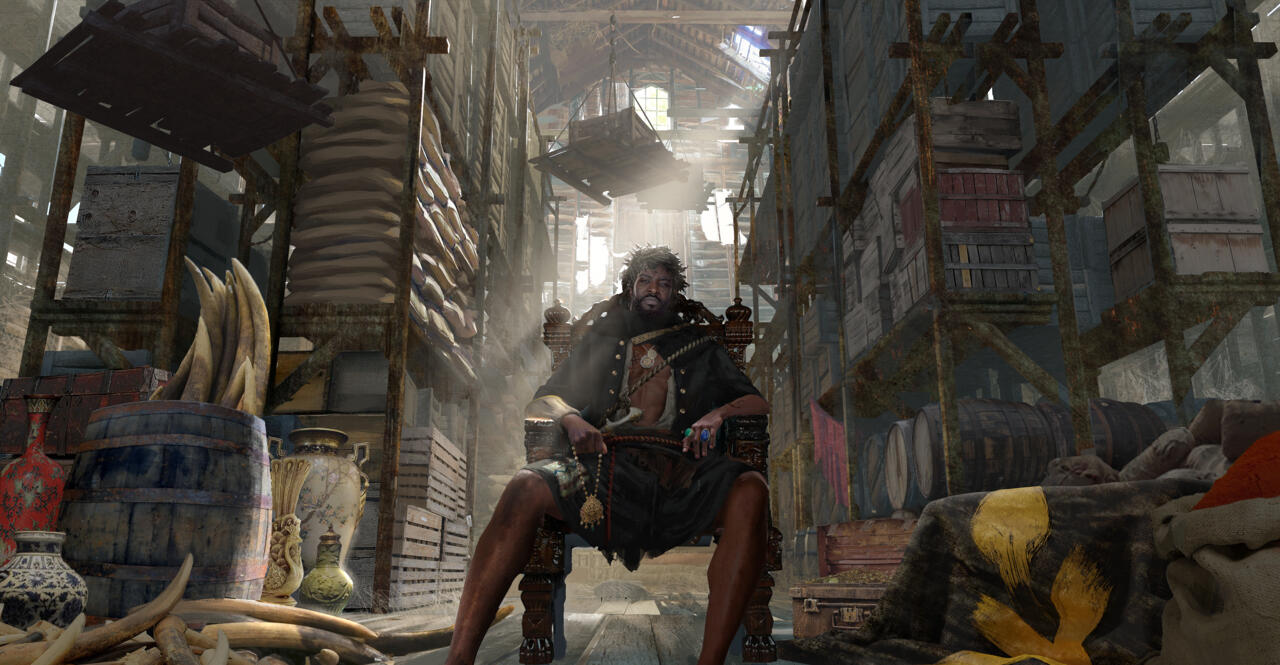
You'll engage with your crew, too, recruiting members to help you sail larger and more powerful ships. Your crew will react to your decisions as captain, supporting you if you're fair and plotting against you if you're a tyrant. Get on their bad side and you may have to face a mutiny--I saw one occur during the gameplay preview after the player repeatedly didn't keep the ship stocked up on food.
"We wanted the deck of your ship to feel like a live-seat theater because your crew members are reacting to your provisions and to your actions," Pellen said. "And if you don't manage them wisely, yes, they can end up into a mutiny." For now, the feature looks relatively simplistic--like a meter to keep track of in a survival game--but Pellen hopes the team can further develop how the crew reacts to you in post-launch updates. It's just one of several ways Ubisoft Singapore wants to create a world that's interesting enough to get lost in.
And to that point of building an intriguing world, Pellen reiterated to me that Skull and Bones only takes inspiration from a real time and place--that doesn't mean its world is only going to follow beat-for-beat the same timeline of events that happened in real-world history. Much like Assassin's Creed, it will inject fictional elements into reality.
"We use all the resources we made to create an authentic experience to both make the best naval combat game, but to also create a relatable fantasy," Pellen said. "And we work also on the diversity, so we created characters who didn't exist--the historians didn't talk that much about female pirates or local pirates, for example. So for those reasons, we fictionalized our world, and we will continue to fictionalize it. But we will keep just the foundation that gives us this gritty layer that feels like what the player is living is authentic and real."
All of this--lore that is discovered instead of told, and a narrative-driven pirate game that focuses on lesser-known Asian, African, and Australian scoundrels--sounds great. And it's for those reasons that I want to try Skull and Bones. I wish I could offer a stronger opinion about this part of the game, but Ubisoft showed off next to nothing when it came to Skull and Bones' narrative in the gameplay preview, cutting past these sections to focus on what naval combat looks like. So as intrigued as I am about this aspect, I'm still not sure how well it's been implemented. Is it unfortunately too little and far between, or a key part of the experience that complements the naval combat and ultimately makes for an altogether stronger game?
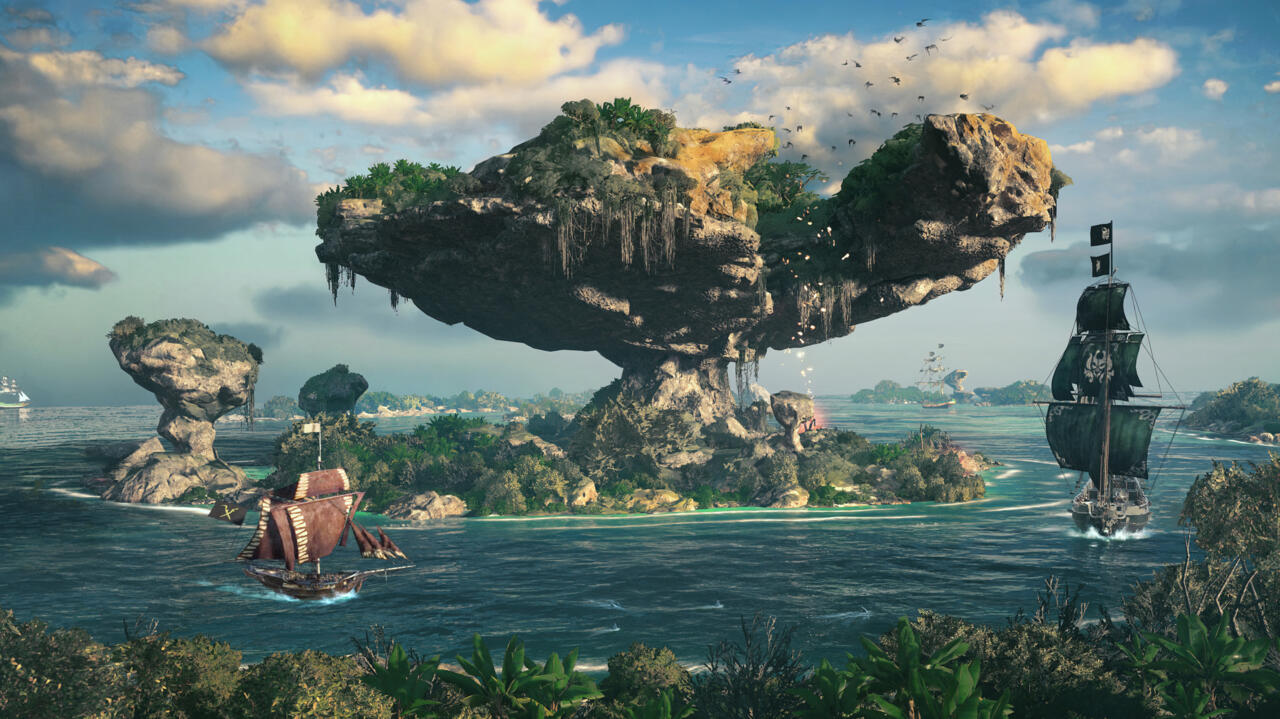
"Naval combat is at the core of Skull and Bones' pirate experience," senior game director Ryan Bernard said during the preview. "We aim to have the best-in-class naval combat. So we want it to be visceral, fast-paced, rewarding--and part of how we do that is to offer the player a wide variety of different weapon choices, which you unlock with Infamy."
Infamy is Skull and Bones' progression system, which is increased by performing notable deeds like looting forts and completing quests. Earning Infamy gets you access to new blueprints or designs that allow you to craft new ships, different weapons and armors, and build your own pirate fleet. Without a single-player campaign to follow, however, how you earn Infamy is up to you. "The cadence of the game is not dictated by a story-driven quest--it's up to you to progress at your own rhythm," Pellen told me.
According to Pellen, there are many different ways to progress: You can become an adventurer that explores and maps the world, a scavenger that finds abandoned wrecks and recycles the components of lost ships, a raider that attacks forts, or a hunter that jumps into PvP and takes from other players. But regardless of how you wish to engage in Skull and Bones' world, you will have to participate in naval combat at some point.
From what I've seen, the naval combat looks good. When all is said and done, Ubisoft Singapore is the studio that first introduced naval combat into Assassin's Creed, a combat system that evolved into a compelling interlude that broke up all the sneaking and stabbing in Assassin's Creed IV: Black Flag and Assassin's Creed Rogue (and far less successfully in III, Origins, and Odyssey). Other studios have attempted their own take on naval combat, but Assassin's Creed does it the best and Skull and Bones seems to be adding onto that already mechanically-sound combat system by implementing interesting customization options, allowing you to adjust the type of pirate you want to be and specialize in offense, defense, speed, or some hybrid of strengths.

"So you'll see cannons, for instance, but we also have Greek Fire, we have explosive mortars, we have bombards that you can lob onto the decks of enemy players and sink their ships," Bernard said. "And that will allow our players the creativity to combine different weapon types, different armor types, and different ship types to give them the best chance at success while they're out at sea pirating."
Multiplayer is the other big difference between Skull and Bones and Assassin's Creed. You can play Skull and Bones entirely solo in the PvP server where every other player can be a potential ally or threat, or jump into PvE where you and up to two friends can team up in three-person co-op and don't have to worry about running into any enemy players. Your progress translates between servers so you can easily jump back and forth.
It's hard to tell how well the multiplayer works without actually playing the game, but it looks like it could be an interesting twist. During the preview, I saw how a player reached out to other players in the PvP server for aid on a mission, only for all parties to turn on each other right at the end to squabble over who would actually walk away with most of the loot. Since players lose most of their loot upon death where they died, there's a great deal of incentive to sink other players and steal from them. It seems to add a terrifying implication to every approaching vessel, while also adding a riveting consideration to the end of every mission: Do you sail home and deposit your spoils or take the risk and try to complete one more mission before calling it a day?
And, to be fair, this consideration exists regardless if you're playing in PvP or PvE as there are dangers to consider beyond other players. Wherever you play, you'll also have to contend with randomized environmental hazards like massive storms or NPC threats like pirate hunters. "On your way to your objectives, many things can happen," Pellen warned.
But as much as customization options and multiplayer seemingly add to naval combat, Skull and Bones does have some puzzling devolutions on what was done in Assassin's Creed--mainly, the human element of sacking fortresses and boarding enemy ships has been reduced to flashy cinematics. You're basically just playing as a ship while at sea, not a pirate sailing a ship. That lack of a human element puts all of the pressure on naval combat to carry the game, and I'm not convinced it can without trying Skull and Bones for myself. The cat-and-mouse aspect of Assassin's Creed's naval combat was only half of why the system works so well in Black Flag and Rogue--leaving the ship to fight enemies with a sword and a couple of pistols as Edward or Shay completed that loop and removing that aspect leaves me worried about how compelling Skull and Bones' gameplay can be in the long-term.
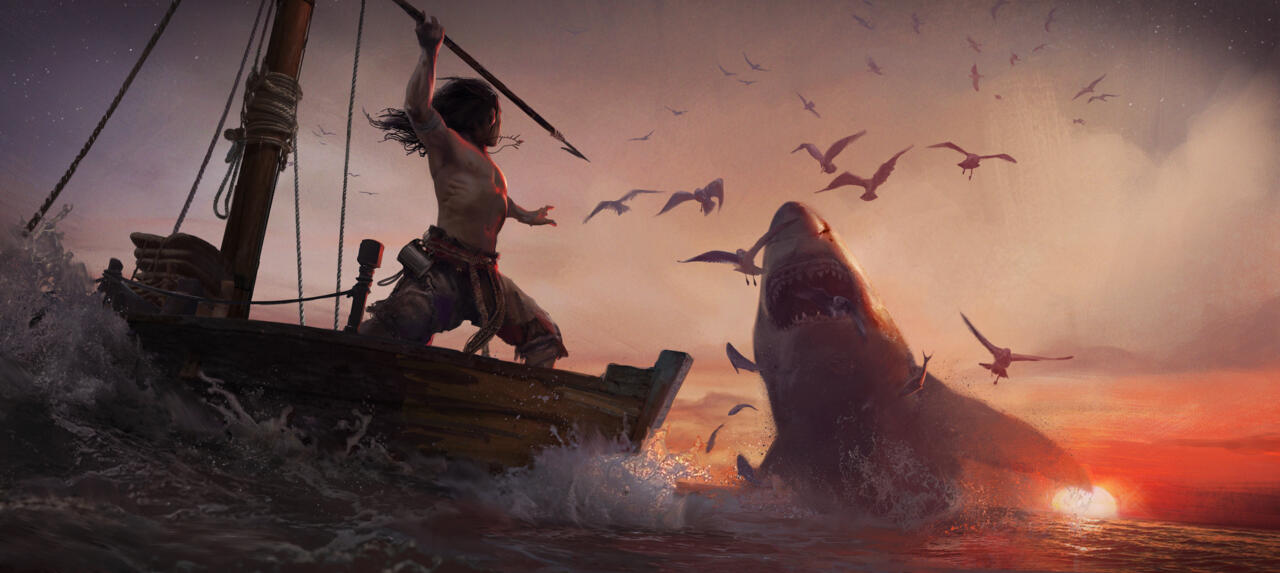
Granted, as a live-service game, Skull and Bones could always get an update down the line that allows you to fight as your custom pirate. It very well could be the new activity that Pellen teased is coming.
"We have a post-launch roadmap with some content coming--some features such as a new activity that should be a game-changer for the players," Pellen said. "And, as I mentioned, we will add a new part of the world, a new character--we started to work on it already so we're ready to inject new content."
Skull and Bones' post-launch roadmap also includes plans to further develop the unique nature of each player's crew and further iterate on the recruitment mechanic. After that, Ubisoft Singapore says that Skull and Bones' direction will largely depend on what the community wants.
"The priorities will depend on the feedback we receive from the community," Pellen said. "So we might release one feature before the one that was initially planned because it corresponds to the expectation of the community. So we will find the right balance between the roadmap and the players."
We'll undoubtedly learn more about Skull and Bones as it approaches release. The game is scheduled to launch for Xbox Series X|S, PS5, PC, Stadia, and Amazon Luna on November 8, and will support cross-play and cross-progression.

